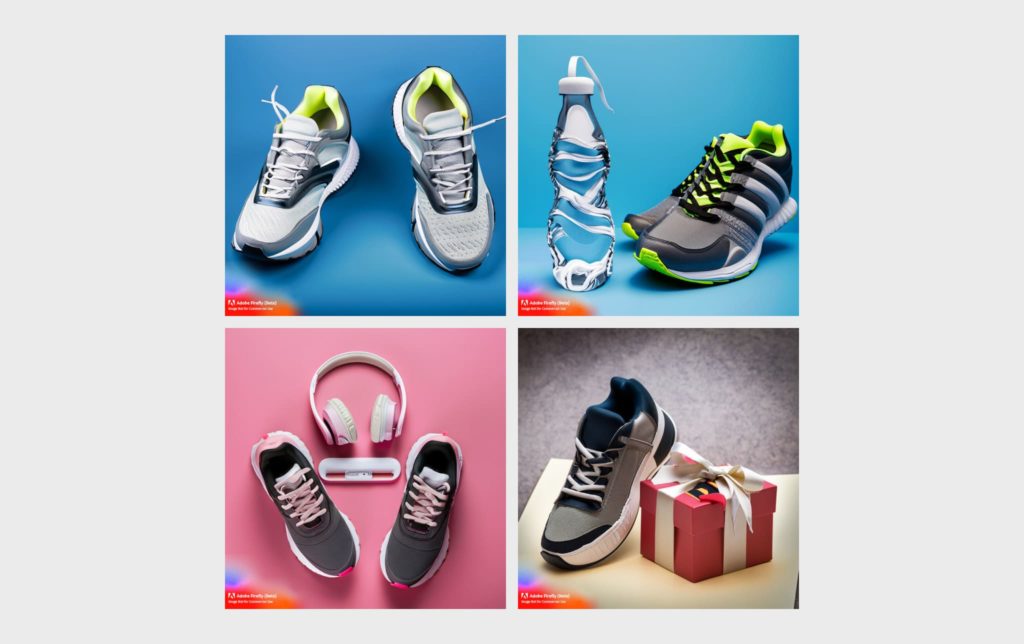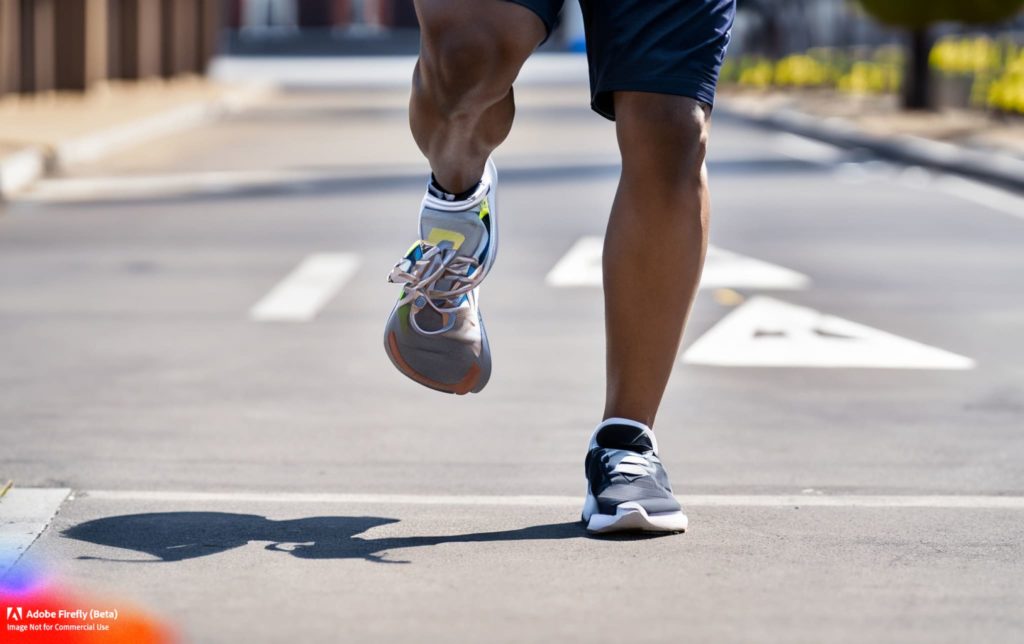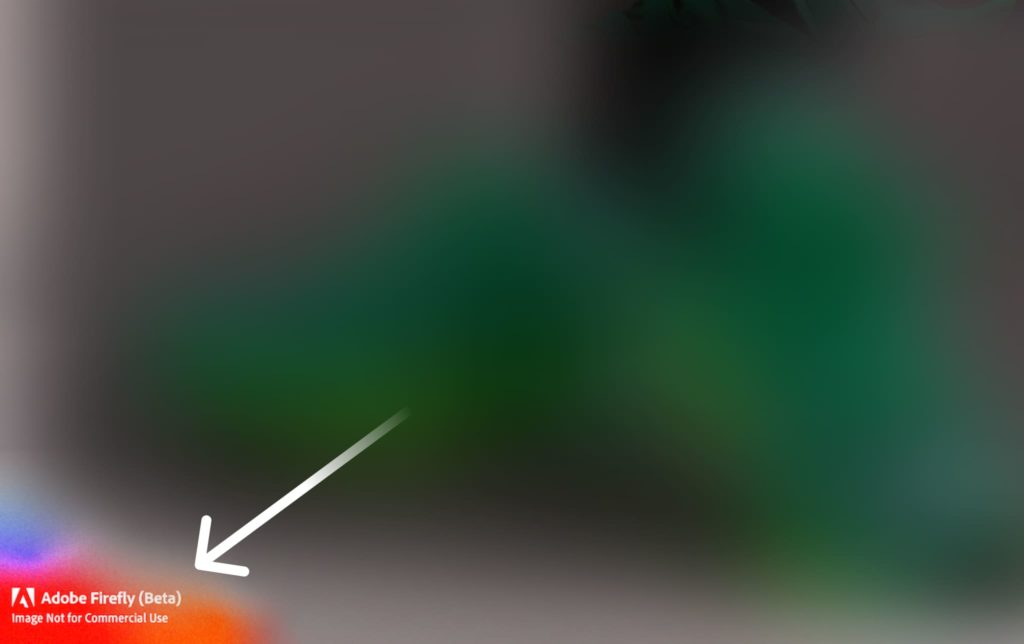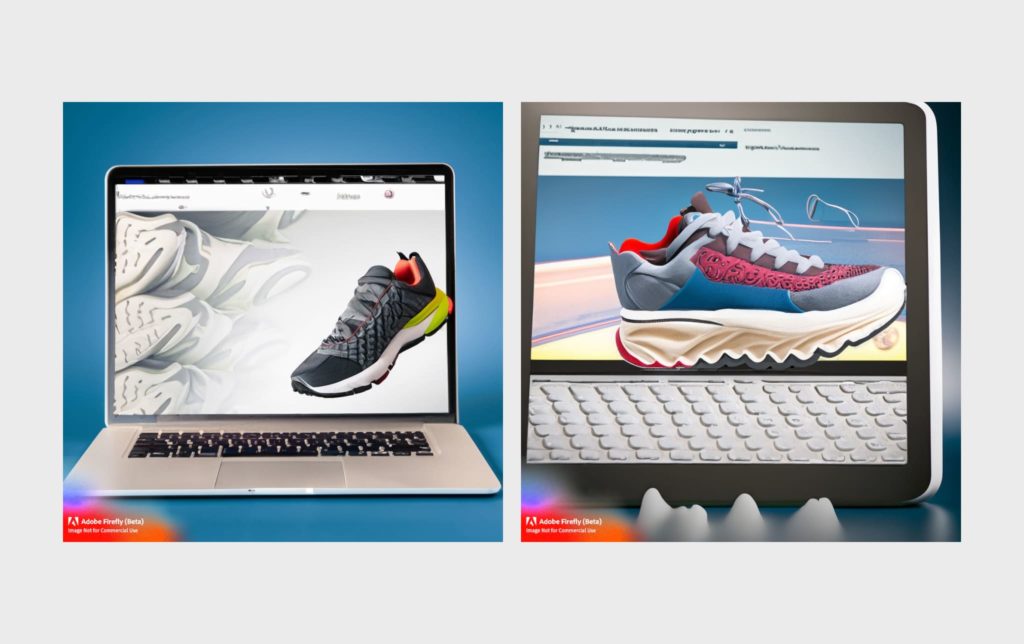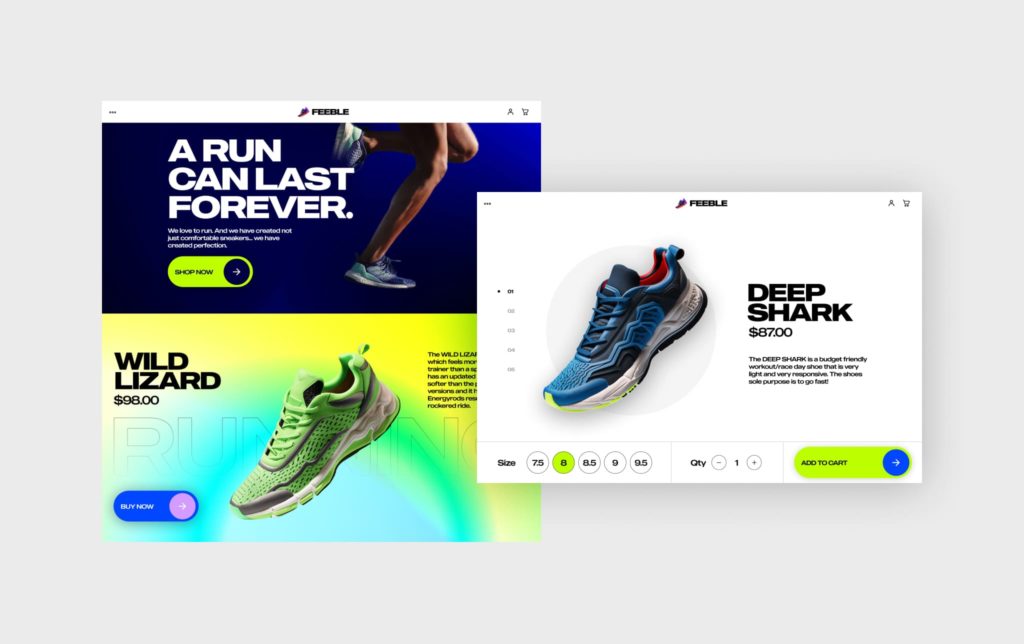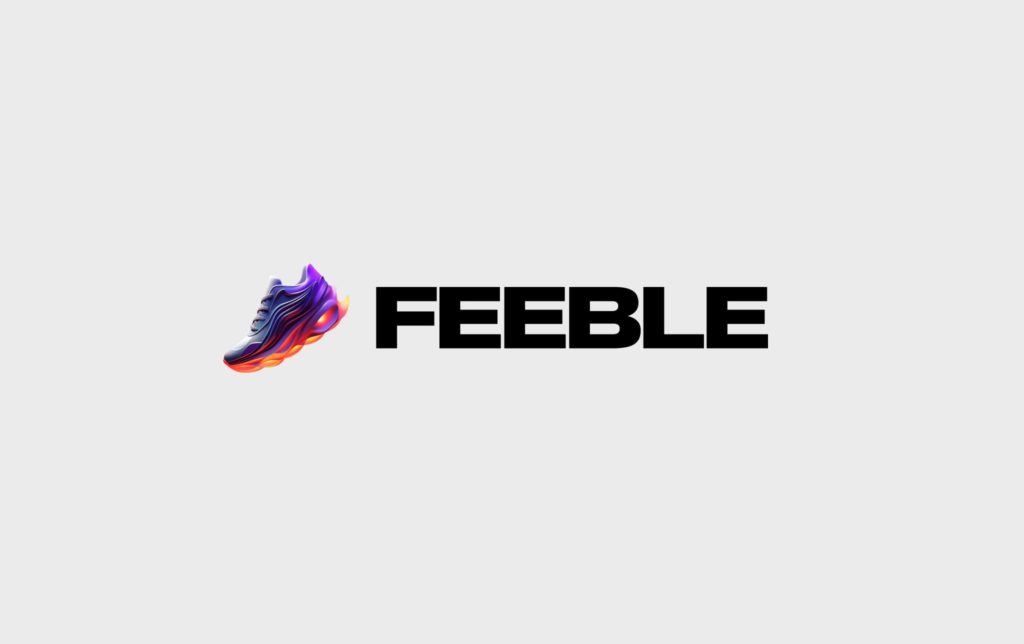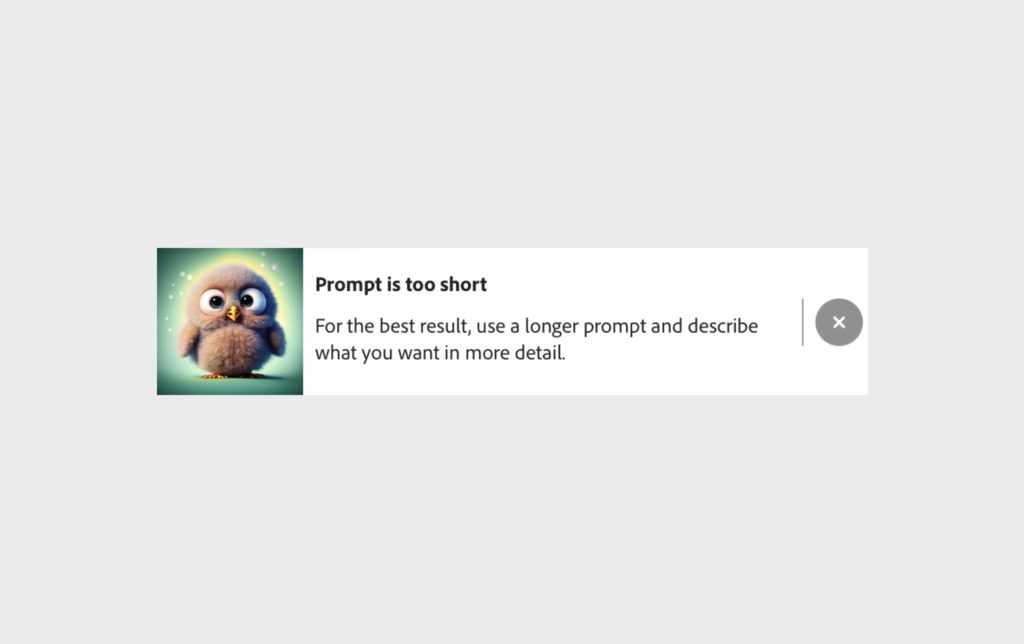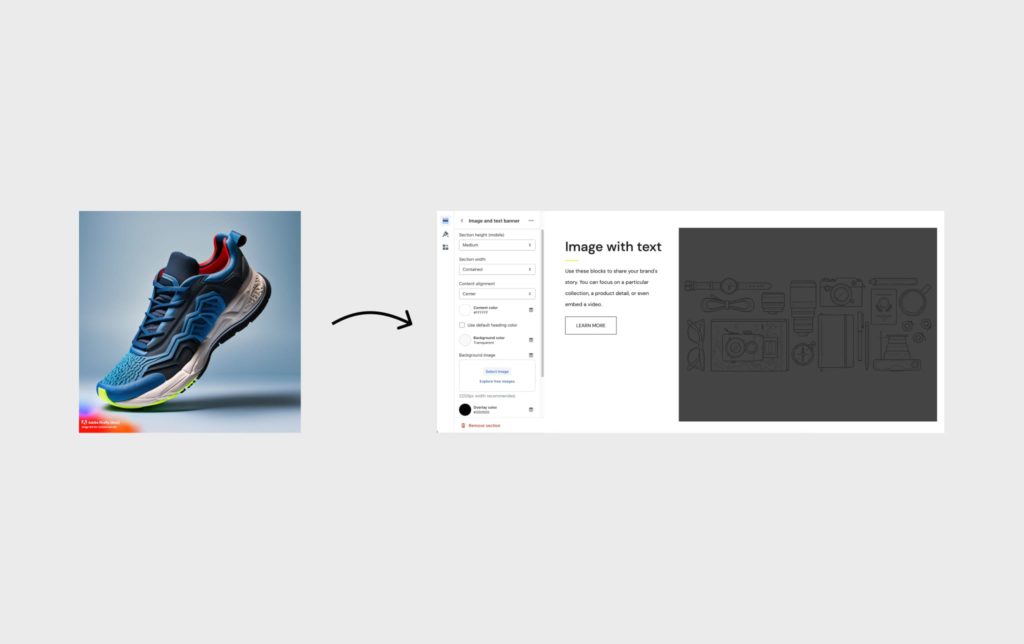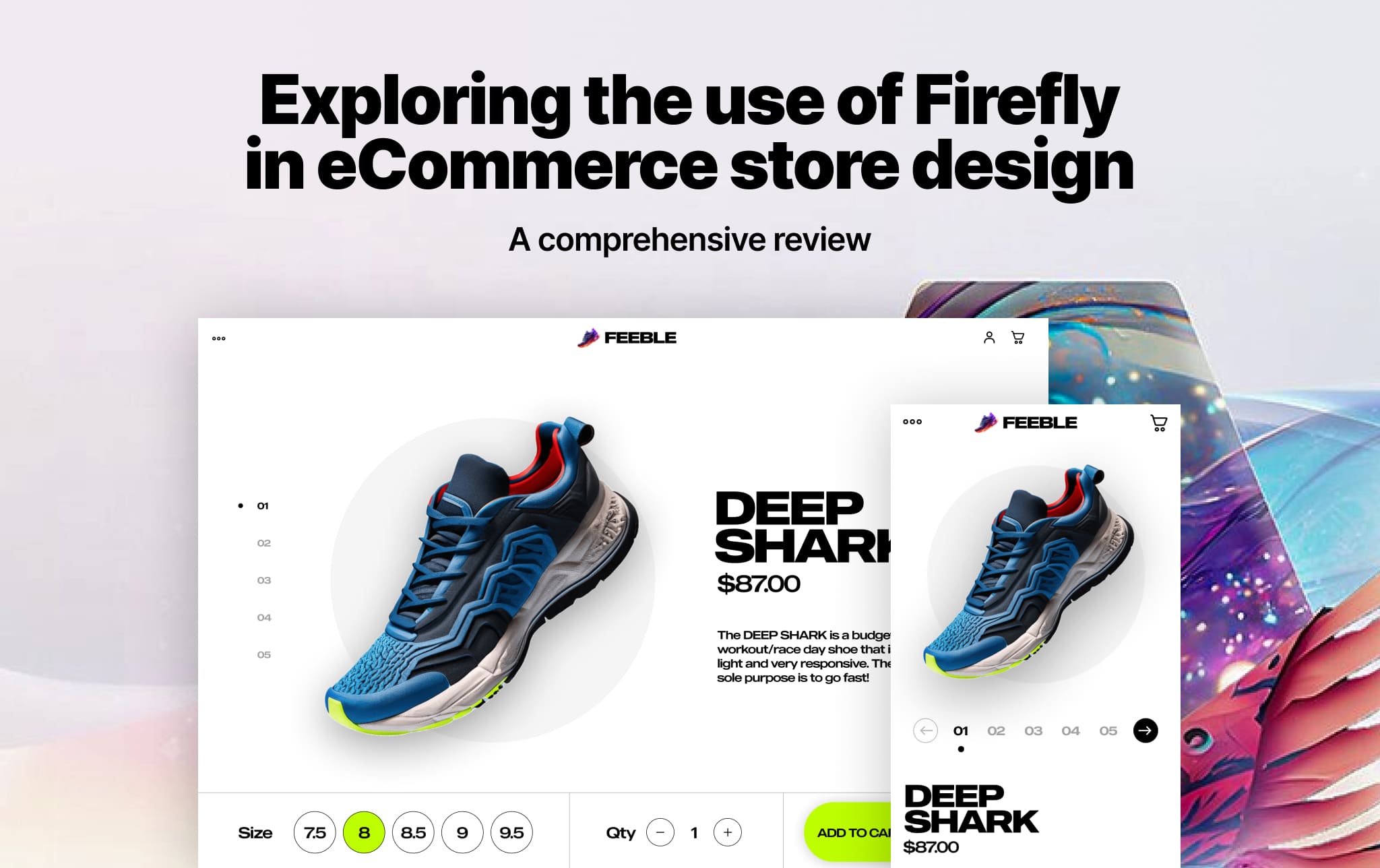
The future of business lies in artificial intelligence, and we’re exploring tools that drive your business forward. Testing AI tools for eCommerce, we integrate them to offer faster, better, and more affordable services.
Last time we tested Midjourney for website layout design, which showcased promising results. This time, our senior-level designer Paul, is putting Firefly from Adobe to the test.
Is Firefly suitable for eCommerce? Which tool is better? Can AI be time-saving? The answers to these and many other questions can be found in the article below.
Let’s dive in!
- Choosing the right industry
- Firefly’s role in crafting visuals
- Image for the hero banner: showcasing sneakers on a person
- Balancing innovation and legality
- Can Firefly design websites? Firefly’s limitations in design
- Creating an end-user design beyond Firefly’s reach
- Crafting brand identity: AI-generated logos with Firefly and Midjourney
- Prompts in Firefly: detailed queries for optimal results
- Breaking down the time investment
- How easy is it to incorporate your Firefly design into your Shopify store?
- Reflections on results: insights into Firefly’s potential in eCommerce
Choosing the right industry
This time, my challenge was to develop a website layout using Firefly. To begin, I decided to test image generation in various product areas, such as clothing, food, and jewelry. Upon reviewing the results, it became evident that Firefly excels at generating images of clothing and footwear.
As a result, I decided to focus my efforts on designing running shoe stores.
What is Adobe Firefly?
Adobe Firefly is a group of creative generative AI models (in simple words, smart computer programs) that can make cool effects for pictures and words. It’s going to be used in Adobe products to help people be more creative and work better. Firefly is like the next step in Adobe’s technology, which has been getting better for a long time.
Firefly’s role in crafting visuals
To begin with, I set out to generate an image of a pair of sneakers and create similar images based on it. However, the process didn’t go as smoothly as expected. The generator produced blurry and deformed images or generated models that were completely different from the original source. The same issue arose when I tried to generate running shoes by repeating the prompt. Each resulting image differed significantly and did not align with a coherent concept.
Anyway, my goal remained unchanged: to obtain three visually similar pairs of running shoes. So, I crafted a prompt specifically for generating three pairs of running shoes, each in a different color. Finally, after all my efforts, I achieved the desired outcome.
Image for the hero banner: showcasing sneakers on a person
To create the flawless hero banner, I began by generating an image featuring sneakers on a person. Initially, I attempted to use pre-existing images of sneakers and employed prompts to “place” them onto a person. However, the results were far from satisfactory, with fuzzy images, distorted proportions, and blurry soles. While the foot image itself was fine, the sneakers displayed various defects.
I achieved the best outcome by utilizing the prompt “image of a running person wearing running shoes.” This approach yielded a superior version of the hero banner.
Balancing innovation and legality
Adobe Firefly is currently available in beta, serving as a platform to gather valuable user feedback. However, it is crucial to understand a significant restriction: materials created using Adobe Firefly are strictly prohibited from being used for commercial purposes. This means that you cannot use the generated outputs for your store or any other venture.
To ensure a seamless and cohesive layout for our example, I have taken the initiative to extract an image of each sneaker. However, please note that this extraction is solely for the purpose of creating the example and not for any commercial use.
Can Firefly design websites? Firefly’s limitations in design
Let me clarify right away that it is not possible. Similar to Midjourney, I attempted to generate a whole website page using AI from scratch. However, Firefly, unlike Midjourney, struggled in this case and couldn’t generate the desired outcome. For instance, it would produce an image of a computer with the website displayed on its screen. As a result, it failed to provide the actual screen or the concept of website design. Currently, Firefly is more suitable for generating images and objects rather than complete designs.
Creating an end-user design beyond Firefly’s reach
As I mentioned earlier, Firefly is not currently suitable for generating end-user designs. Therefore, I took it upon myself to design the website from scratch. This involved selecting a color palette, determining the placement and style of elements, choosing appropriate fonts, and more. Drawing upon my extensive experience in eCommerce design and staying updated with the latest trends, the process was relatively effortless.
Crafting brand identity: AI-generated logos with Firefly and Midjourney
I attempted to design a logo using Firefly, but unfortunately, the results were unsatisfactory, despite having many customization options. After several unsuccessful tries, I decided to switch to Midjourney for creating the logo. The final design I settled on was a combination of a 3D image and text. As it was still a concept, I kept the logo in PNG format instead of translating it into SVG. However, if needed, it is possible to convert the AI-generated logo into a vector format.
Prompts in Firefly: detailed queries for optimal results
As you may already know, in Midjourney, generating an image with a one- or two-word prompt is quite straightforward. However, this approach doesn’t work in Firefly. When using such short prompts, a pop-up message appears, suggesting that you provide a more detailed query. Thus, the “running sneakers” prompt didn’t yield the desired results for me.
To make Firefly work effectively, it’s important to note that you need to be able to craft detailed prompts. However, it’s worth mentioning that with Firefly, there’s no requirement to specify image parameters like resolution or style within the prompt itself. These settings can be conveniently adjusted in the settings panel.
Breaking down the time investment
Based on my experience in design and previous work with AI tools, it took me approximately 16 hours to create a design concept. However, it is important to note that for individuals with little or no experience, the time required may be longer.
How easy is it to incorporate your Firefly design into your Shopify store?
As with any design, it largely depends on whether you have a development team or prior experience with Shopify. If you have your own developers or are working with a professional Shopify development company, implementing this concept shouldn’t pose much difficulty.
However, if you lack a development team and experience, this process can become quite challenging for you. In such cases, it’s easier to generate images and simply insert them into a pre-existing theme without the need for design development. This way, you can bypass the complexities involved in the customization process.
Reflections on results: insights into Firefly’s potential in eCommerce
In my opinion, Firefly lacks significant relevance in the realm of website building and eCommerce currently. However, we will continue to monitor the progress of Firefly and other AI tools to keep you well informed about the latest updates that could prove beneficial for expanding your business. If you are already considering implementing AI solutions for your online store, feel free to contact the SpurIT team. We would be glad to provide comprehensive insights into the various possibilities and potential benefits that await you.
